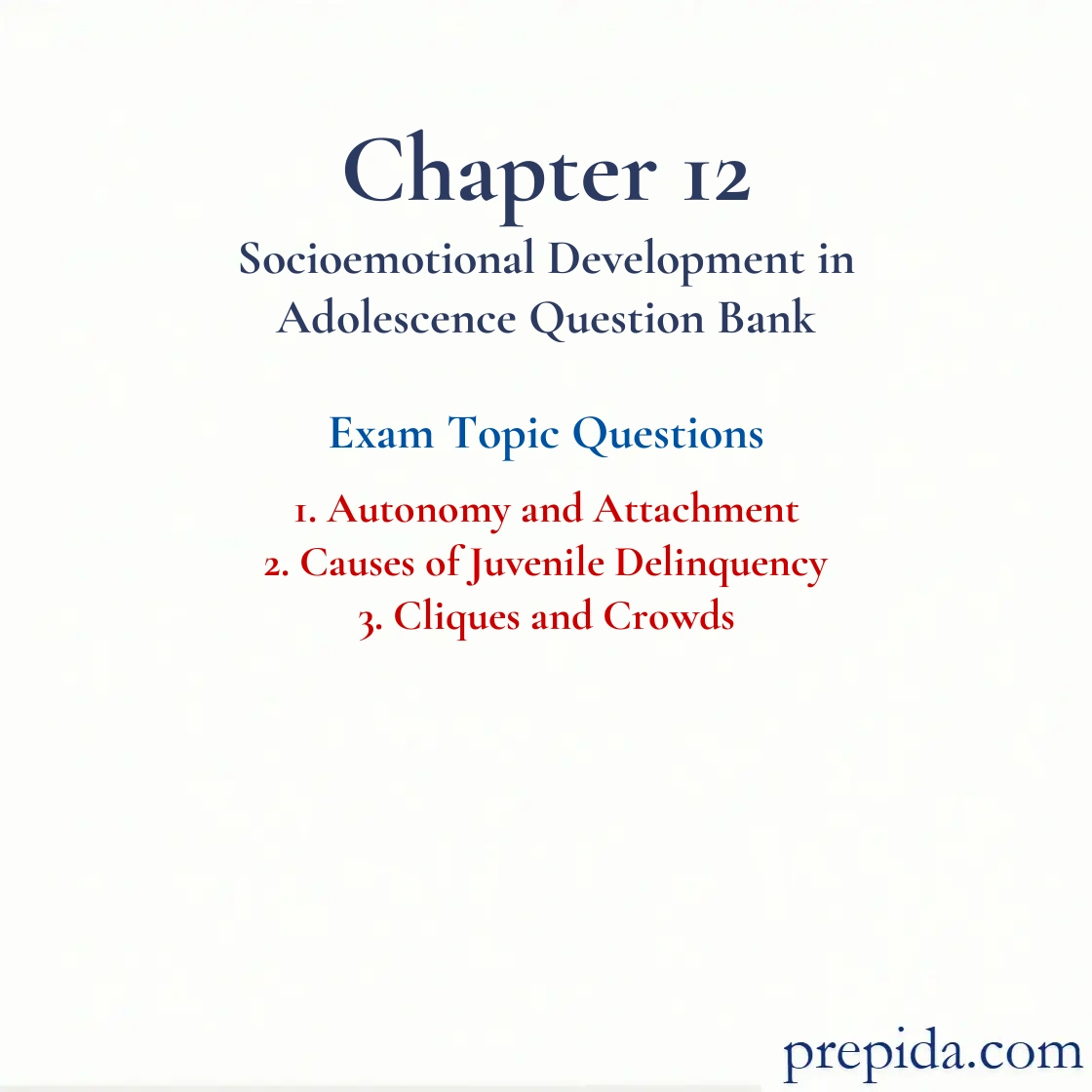
Conflicts arise between parents and adolescents because
- few parents anticipate how strongly their adolescent will push for autonomy and responsibility.
- while parents want autonomy, adolescents want a connection.
- parents want their adolescents to push the boundaries, while adolescents want to maintain the status quo.
- parents want to relinquish all of their control over their adolescent.
Adolescent Egocentrism: The heightened self-consciousness of adolescents.
One study found that low rates of delinquency from 14 to 23 years of age were associated with a(n) ________ parenting style.
- neglectful
- indulgent
- authoritative
- authoritarian
Authoritative Parenting: A parenting style in which parents encourage their children to be independent but still place limits and controls on their actions. Extensive verbal give-and-take is allowed, and parents are warm and nurturing toward the child. Authoritative parenting is associated with children’s social competence.
Meghan and her group of five girls are all enthusiastic gymnasts. They hang out together after school and go to the mall on weekends. They are all of the same age and have similar tastes in music and food and, as a result, enjoy each other's company. Which of the following terms best describes this type of group?
- clique
- crowd
- mob
- horde
Clique: A small group of about five or six individuals that may form among adolescents who engage in similar activities.
"Jocks" who are good at sports or "druggies" who take drugs are examples of
- cliques.
- teams.
- crowds.
- squads.
Crowd: A larger group structure than a clique that is usually based on reputation; members may or may not spend much time together.
Sandra and Selena are both in high school. Sandra thinks that being a member of a crowd is more helpful in forming friendships than being a member of a clique, but Selena thinks otherwise. Which of the following statements most likely supports Selena's argument?
- A crowd is less personal than a clique.
- A clique contains more members than a crowd.
- Unlike the formation of a crowd, the formation of a clique is based on reputation.
- Unlike in a clique, the members of a crowd spend a lot of time together.
Crowd: A larger group structure than a clique that is usually based on reputation; members may or may not spend much time together.
Juliana is part of an online science group. Its members meet once every month to discuss the advancements in science and technology. During one of the meetings, she is introduced to several other members of the large online group. She finds these meetings interesting as she gets to meet people of different age groups and backgrounds. However, like the members of the group, she does not intend to spend much time with them or get to know them personally. Which of the following terms best describes this type of group?
- band
- crowd
- team
- squad
Crowd: A larger group structure than a clique that is usually based on reputation; members may or may not spend much time together.
Which of the following statements is true about the characteristics of a clique?
- It is formed solely because adolescents engage in diverse activities.
- The average number of people in a clique is eight to ten.
- The members of a clique are usually of the same sex.
- It is less personal than a crowd.
Clique: A small group of about five or six individuals that may form among adolescents who engage in similar activities.